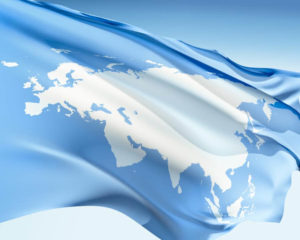Formation of Trade Specialization of Kaliningrad Oblast
Lamande, Vincent, Vinokurov, Evgeny (2003) Formirovaniye torgovoy specializacii Kaliningadskoy oblasti [Formation of the Trade Specialization of Kaliningrad Oblast], Voprosy Ekonomiki, 2: 53-63.
Kaliningrad region is currently at the centre of discussions between the European Union (EU) and the Russian Federation. Although small in terms of geography (15.100 Km²) and population (943,2000 in 2001), Kaliningrad gains on importance due to EU enlargement process and Russian strong political will to avoid separatism. Since break-up of the Soviet Union Kaliningrad Oblast is an exclave of Russia. With the next round of enlargement likely to include both Lithuania and Poland, Kaliningrad is set to become a geographical enclave within the EU. Oblast has a limited domestic market size, which is not enough to reach economies of scale for a wide range of goods. It has also a resource base not insufficient to ensure the base for production. That creates significant asymmetries between patterns of domestic production and consumption1 . Trade inflows and outflows tend to play a specific role in such a small economy. Additional and very important factor is Kaliningrad exclave position in relation to all other Russian regions. This leads to a special meaning of trade in overall development of Kaliningrad’s regional economy. The region stays immediately before two complex challenges – enlargement of the EU and Russia’s entry into the WTO. Setting right policies for the region to have the capacity to face this double challenge demands for correct and full assessment of the regional economy . The objective of the paper is to give a more accurate economic image of the Russian enclave in terms of its trade both with foreign countries and with mainland Russia. We begin with reassessment of Kaliningrad interregional trade that is trade with the Russian mainland from which the region is separated. Then, after short characteristics of foreign trade flows we go on discussing Kalinigrad’s intermediary position in Russian-European trade. Next part contains calculation of regional trade openness and intra-industry trade values. We complete the paper with conclusion and some final remarks on perspectives of Kaliningrad trade and economy.
